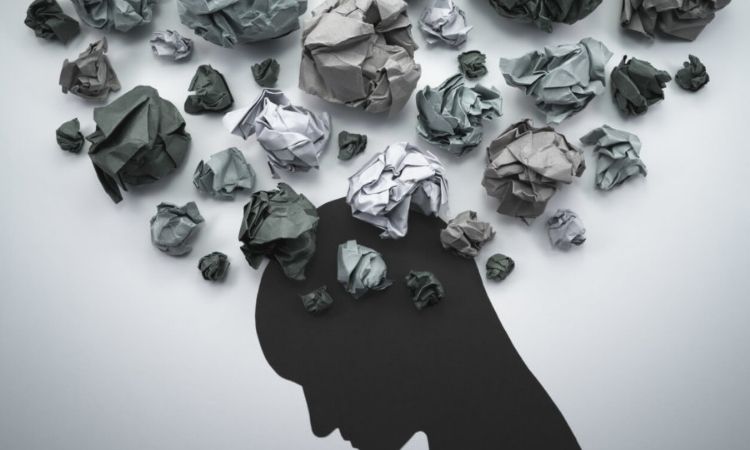
Ever Wondered How Opioids Affect The Brain?
Perhaps you’ve wondered, “how do opioids affect the brain?” It seems like every time you turn around, you see news about opioids. You hear words like “opioid epidemic” and “opioid crisis.” The news talks a lot about addictions. They frequently mention the deaths. But how does a person get real information about opioid effects on the brain?
In this post, Harmony Treatment & Wellness assesses the following:
- What are opioids?
- How do opioids affect the brain?
- What is opioid use disorder?
- Do treatments exist for opioid use disorder?
- What if I want more information about opioids and the brain?
What Are Opioids?
Opioids occur naturally in your body. Your brain makes them. Researchers call these endogenous opioids. When we hurt, our brains release these opioids to make us feel better. Opioids have the function of easing pain.
What’s The Difference Between Opioids And Opiates?
We can also find opioids in nature. They come from the poppy flower (papaver somniferum). 3 natural opioids we get from the poppy plant include:
- Opium
- Morphine
- Codeine
You may see the terms “opioid” and “opiate” used as synonyms. But they don’t mean the same thing. The word “opioid” refers to both natural and artificial substances. We apply the word “opiate” to natural substances.
Opioids have legitimate medical uses. But when news reports refer to an “opioid crisis,” it makes opioids sound terrible. You may hear the word “synthetic” used in this context. It means that a human being created it. Find a few examples of synthetic opioids below:
- Heroin
- Fentanyl
- Hydrocodone
- Oxycodone
How Do Opioids Impact The Brain?
We learned that our brains manufacture opioids. So, what happens if we consume an opioid? Our brain rewards us. It releases chemicals that make us feel good. Imagine the feeling when you spend time with a loved one. Or when you eat a good meal. Now, imagine that you could amplify that feeling. That represents a glimpse of what opioids can do in the brain.
Our brain becomes accustomed to this feeling. It views this heightened sense of pleasure as its new normal. Over time, the brain begins to require opioids. Without them, it will not function properly. We use the term dependence to describe this state. If a person dependent on opioids stops using them, withdrawal may result.
What About The Body?
We know that opioids help ease pain. They also slow down the brain’s processes. This can make our bodies feel heavy and sluggish. Opioids cause us to get sleepy. We might experience a sense of calm. Therein lies much of the problem with opioids. They slow things down too much.
Opioid overdose can lead to a condition known as ”hypoxia.” It happens when the brain doesn’t get enough oxygen. Opioids slow down the brain and the body. Therefore, they reduce our breathing. If we don’t breathe enough, our brains don’t get enough oxygen. This condition of hypoxia can prove fatal.
What Is Opioid Use Disorder?
Humans like to feel good. And opioids give us good feelings. We should not feel surprised by the fact that people become addicted to opioids. They make pain go away. They provide relief. And they do it well.
But, abusing opioids can lead to opioid use disorder (OUD). The CDC has published a wealth of literature on the exact definition of OUD. For your purpose, you need only keep one thing in mind. Someone struggling with OUD keeps using opioids. And they cannot quit. They keep consuming opioids despite the presence of negative consequences.
Do Treatments Exist For Opioid Use Disorder?
If you struggle with OUD, do not respond with fear. If you love someone with OUD, hold fast. One must not OUD as a life sentence. Harmony Treatment & Wellness knows that people can (and do) recover from OUD. So, inhale. Below, you will find some examples of treatments for OUD.
MOUD/MAT
Treatment providers might treat OUD with a method called medication for opioid use disorder (MOUD). You could hear it called medication-assisted treatment (MAT). MOUD/MAT offers someone with OUD an opioid prescription to help the recovery. Treatment centers have used methadone for such purposes. More recent innovations in MOUD include buprenorphine and naltrexone.
Cognitive Behavioral Therapy
Humans don’t inherently know how to think about our own thoughts. We just assume that we have thoughts. We (quite erroneously) believe we cannot change them. Enter cognitive behavioral therapy (CBT). CBT teaches people to evaluate their own thoughts. It helps them to question their thoughts. With CBT, we learn not to take our thoughts at face value. Particularly when used with MOUD, CBT has proven effective in treating opioid use disorder.
What If I Want More Information About Opioids And The Brain?
Thank you for reading this far. Help exists at Harmony Treatment & Wellness. If you’d like more information about how opioids affect the brain, reach out to us. We believe information empowers people. Contact us today to learn more.
